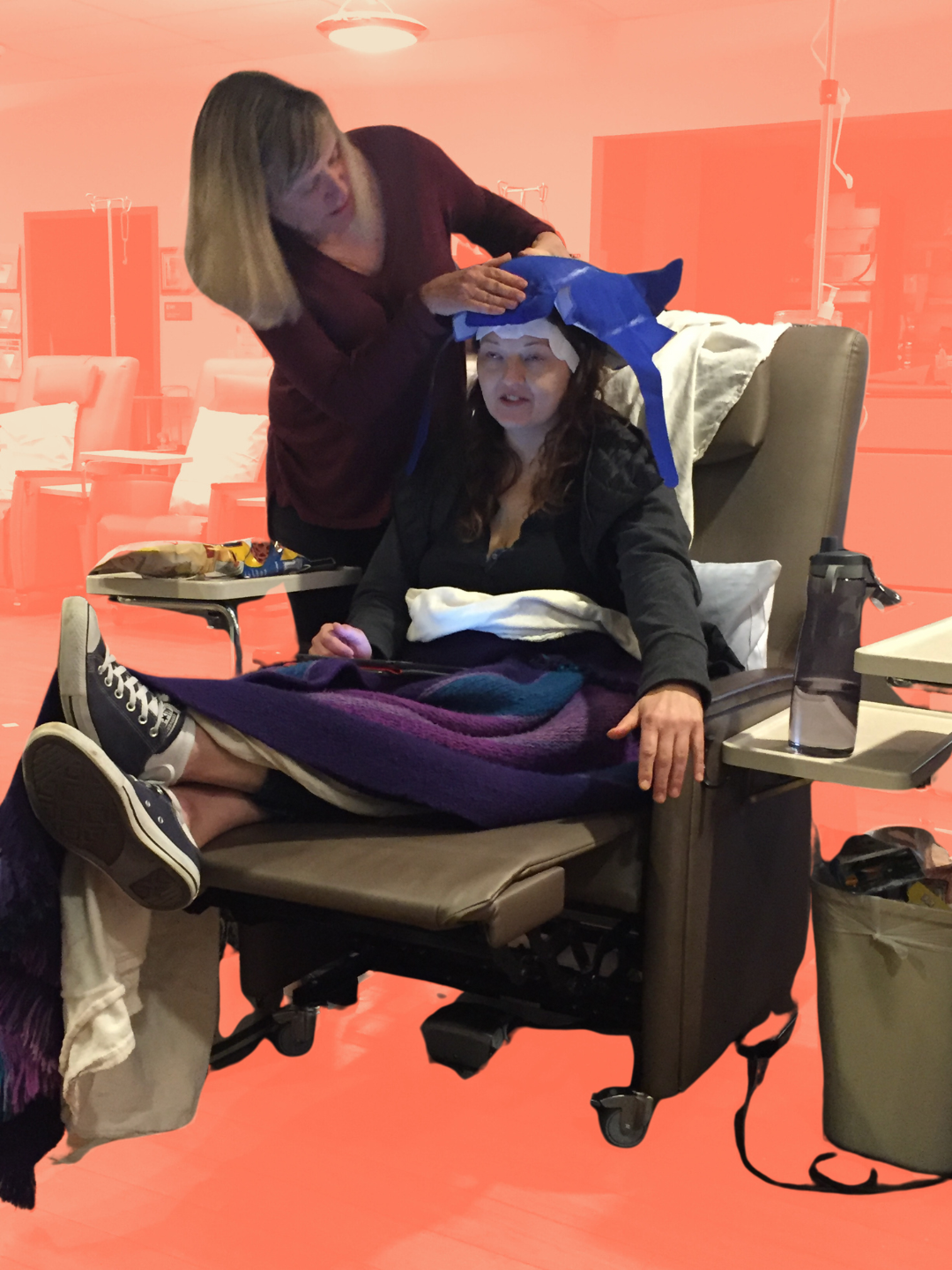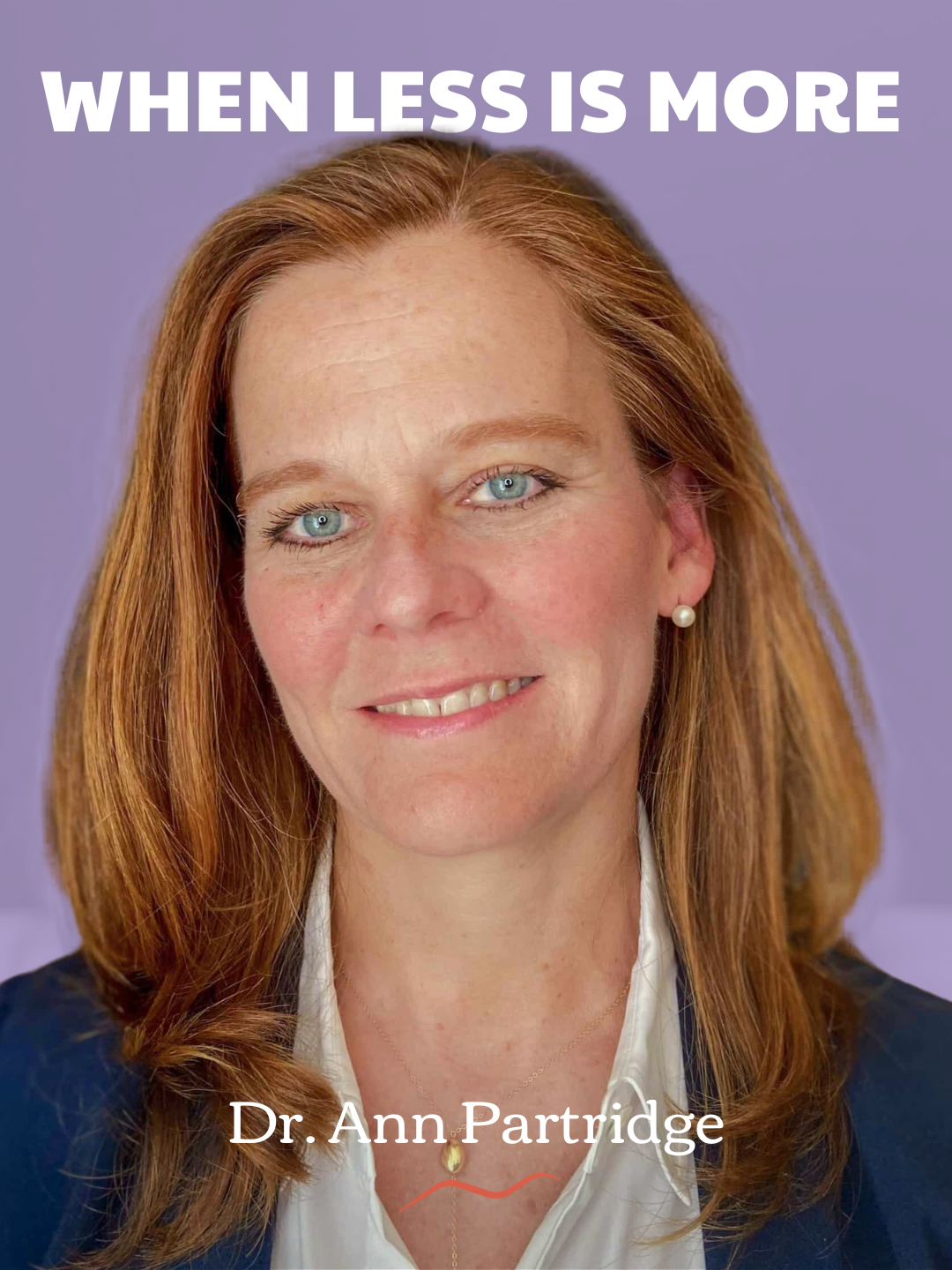When retelling the story of Cooler Heads, CEO and Founder Kate Dilligan talks about her friends.
Dilligan, who was diagnosed with triple-positive breast cancer in 2016, said it was her friend Sarah who, after a Google search, told her that she could keep her hair through treatment with scalp cooling.
“I was totally floored because I'd never heard of this,” said Dilligan.
Then, after finishing treatment but holding onto frustration at the more than $7,000 she had to pay out of pocket to save her hair, she recalled sitting with her friends Kevin and Tracy over coffee when she floated an idea by them.
While scalp cooling was available, it struck Dilligan that it wasn’t accessible.
Beyond the money needed to rent the cap and supply the dry ice to keep it cold, the systems on the market at the time needed to be manually changed every 20 to 30 minutes to stay at the appropriate temperature, which a patient receiving treatment cannot do independently. To avoid asking a friend or family member to take time off work for each of her eight chemo days, Dilligan hired a “coach” to help her with the laborious process, adding to the expenses.
After describing her vision for a device that patients could use on their own, Dilligan said it was with her friends’ belief and support that Cooler Heads and their device, Amma, was born.
In the years since Dilligan’s treatment, scalp cooling has become more common and is on its way to becoming more accessible. In December 2024, New York became the first state in the U.S. to mandate that insurance companies provide coverage for scalp cooling, with the law coming into effect in January 2026.
“This is another important step to make scalp cooling the standard of care,” said Dilligan. “Allowing patients to have privacy by keeping their hair as they face the toughest aspects of treatment is a critical part of their well-being.”

What is Scalp Cooling?
Also referred to as cold capping depending on the device used, scalp cooling uses low temperatures to minimize hair loss during chemotherapy for solid tumor cancers without scalp metastases.
Certain chemotherapies—including those commonly used in the treatment of breast and gynecologic cancer, such as paclitaxel and doxorubicin—are effective at treating cancer because they target fast-growing cells throughout the entire body. Hair loss is a common side effect of these treatments because hair follicles are also fast-growing.
Scalp cooling and cold cap systems prevent chemotherapy from reaching the hair follicle by restricting blood flow. To be as effective as possible, cold caps and scalp cooling systems must be used for about an hour before treatment and two to three hours following.
The Difference Between Scalp Cooling & Cold Caps
Cold caps are manual systems that require dry ice to keep the caps cold and must be switched out every 20 to 30 minutes to stay at a therapeutic temperature, explained Julia DeVincenzo, RN, Cooler Heads’ Director of Training and Education. Scalp cooling systems, she explained, are refrigerated machines that can maintain a preset temperature.
One common cold cap system is Penguin Cold Caps, while Paxman and Cooler Heads’ Amma are examples of scalp cooling devices. Unlike Paxman, however, Amma is portable and was designed to be patient-administered—something that was important to Dilligan.
Preserving Hair, Maintaining Control
For Dilligan, preserving her hair and helping others do the same means three things: privacy, agency, and identity.
“I don't want people to know that I'm sick. I want to keep this information to myself as I deal with this,” she remembered thinking at the time of her diagnosis. “I wanted to continue to work and to live my life and to get through it.”
Because she successfully maintained about 40 percent of her hair through her treatment, Dilligan could control to whom she disclosed her diagnosis, avoiding unwanted comments or reactions, while still feeling like she looked like herself in the mirror.

This, she stressed, is more than just vanity and is something she hears from patients of all genders whom Cooler Heads serves.
“It was really important for me to have a sense of privacy.”
What You Need to Know Before Scalp Cooling
DeVincenzo works with patients before and during treatment to help them through the scalp cooling process, which includes setting expectations around saving their hair.
“We are so passionate about setting that expectation right from the beginning, that based on your specific regimen, here's the likelihood that you have of retaining 50 percent or more of your hair,” she said.
Beyond that, DeVincenzo and her team also provide haircare guidelines to help a patient have the best outcome while recognizing that strict guidelines that take you out of your normal haircare routine can feel like more control being taken away. They include:
- Avoid cutting or coloring your hair before starting chemo
- Stay away from heat styling
- Cut down the number of times you wash your hair per week
“Our goal is for every patient going into their very first treatment to be aware of what they are up against,” said DeVincenzo.







